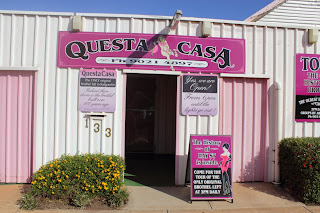The research - I
WA 2013
The common question is - why i was in Laverton a remote place in WA?
wrote a proper idea of my existence in a desert - when i say "proper" it means grammar and spellings has been checked.
but still i feel there is more than what i wrote so will expand in parts.
Immigration museum, Melbourne
WA 2013
The common question is - why i was in Laverton a remote place in WA?
wrote a proper idea of my existence in a desert - when i say "proper" it means grammar and spellings has been checked.
but still i feel there is more than what i wrote so will expand in parts.
Immigration museum, Melbourne
Part 1
Introduction:
The
Golden Feral Trail is a journey, which records local oral histories and stories
of the region that trace the relationship between South Asia and Western
Australia. The records found through the stories of the trade and migration
between the two region go back to early 19th century to the present.
The stories of “Afghan” or the “Pathans” or the geographical route to Calicut
–the origin of Calico or the recent traces of the call center’s.
My
interest lies on the claim of an identity, which doesn’t have to be directly
linked to a country border or religion. The word ‘Afghan’ doesn’t necessary
mean from Afghanistan. An ‘Afghan’ could be the “Pathans” of the South Asia or
the Sikhs of Punjab or the Marwardi community from Sindh or the nomadic sect of
community from the North west region of South Asia. The word ‘Afghan’ I
realised was the password for men to enter Western Australia for trade and
building infrastructure.
The
research has taken me from Laverton to Coolgardie – which follows a heritage
trail of the Goldfields – The Gold rush to the Ghost towns. It also leads
me to North America to Africa to Western to East South Asia – a thread that
starts with the British Trade. A trade which also records the import and export
of animals, seeds and plants, particularly those that have become a feral or
weed – an ecological problem.
The
south Asian trade and migration helped this area to build infrastructure before
the introduction of roads and railways. The Trail, which remains beneath the
red earth, this WA horizon tells a story of a nomadic establishment of economy
but also a loss of identity.
My
research and trail has taken me to places like: cemeteries, most of the ghost
towns, a few abandoned graves and mining pits, to many existing archives and
also have peeped into personal photo albums.
Looking
at the archives I have also come across few stories of the early native guides
in WA and their associations with the nomadic community that came from South
Asia and settled. Now when I mention the native guides – they basically were
just not a guide but translators and interpreters who formed the foundation of
building the present society or the infrastructure and welfare, which we
witness today.
For
me now the question is - are these things lost or abandoned? 'Lost' because of
the loss of history but still in contrary it records the trail of the human
history. ‘Abandoned' because it gives you the feeling of homelessness and also
a sense of meaningless of the life circle. Homelessness and restlessness and
flatness all falls into a thought of boredom or does it also fall into the
thought of loss of a power and identity?

















































